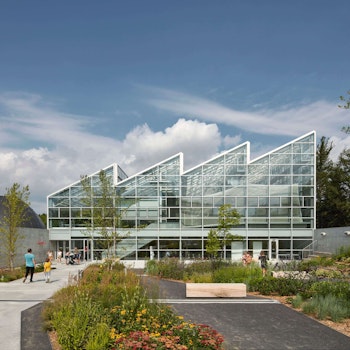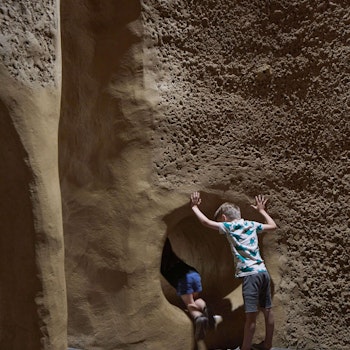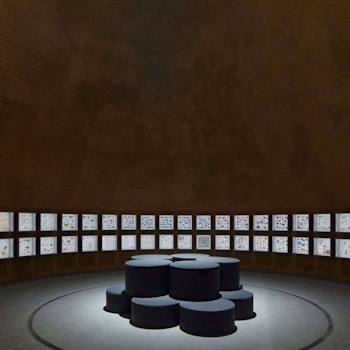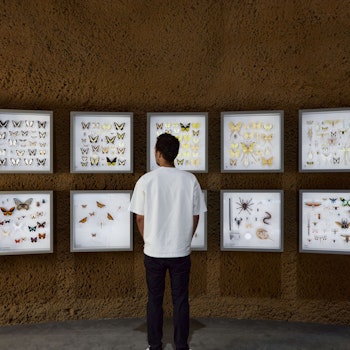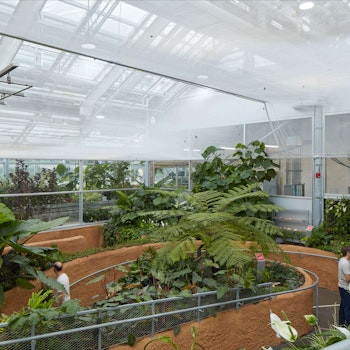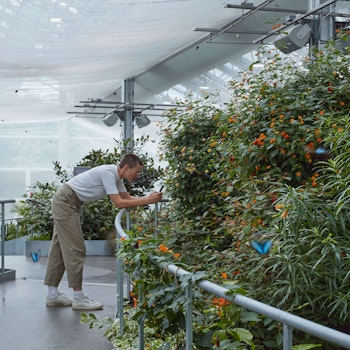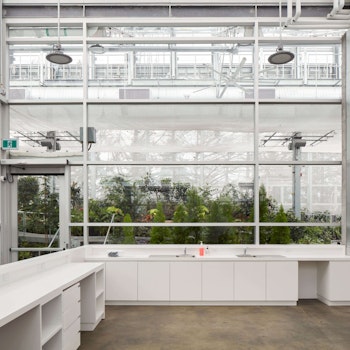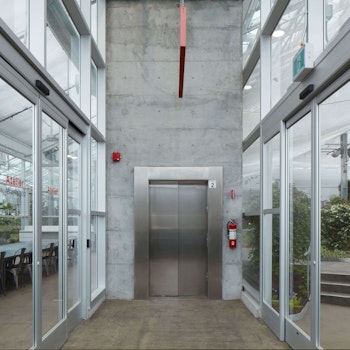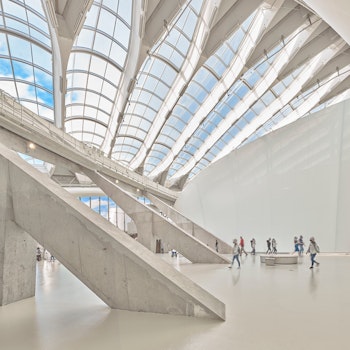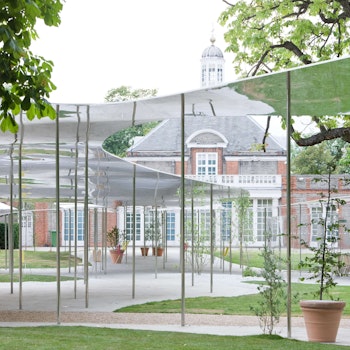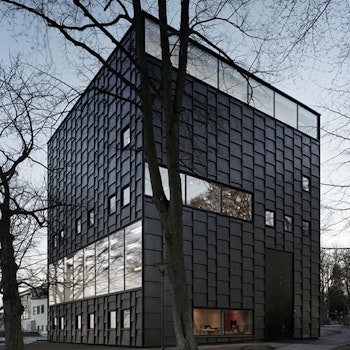ARCHITECT
KUEHN MALVEZZI + PELLETIER DE FONTENAY + JODOIN LAMARRE PRATTE ARCHITECTES
The design of the new Montreal Insectarium builds on detailed analysis of 400 years of museums, orangeries, greenhouses, and other architectures for the categorization and display of the natural world. Acknowledging the destructive history of this conceptual separation between humans and other natural life, the project’s design subverts museological norms and expectations.
Unlike museums designed to contain changing exhibitions and displays, the Insectarium’s curatorial concept and its museological expression are held in the very architecture of the building. The precisely choreographed route through the building dissolves divides between the human and the natural with barrier-free displays and immersive sensory experiences.
The external architecture of the Insectarium is visible through three archetypal structures that communicate a light touch construction process with integration into the pre-existing landscape of the botanical garden. The walled Pollinator Garden serves as a relaxing and welcoming space. The garden slopes down to the base of a greenhouse, which contains a central hall and living environments for live insects. Beyond the greenhouse, an enigmatic planted mound erupts from the surface as a cocoon-like dome that contains the Insectarium's collection within.
Immersive experience
The Insectarium visitor’s experience begins and ends with a promenade through the Pollinator Garden. It blurs the divide between the building’s interior and exterior, while providing first encounters with insect life that will become transformed during the progression through the rest of the museum.
Upon passing through the entrance hall, the immersive experience of sensory metamorphosis begins. The Labyrinth takes visitors through a curved, descending path with sloping walls. The path is designed to destabilize our perception; to signal a departure from familiar spatial environments and the entrance to an underground labyrinth of six Perceptual Alcoves.
The six rooms disorient human senses and mimic the sight, sound, and movement of insect:
One eye, many facets simulates the pixelated vision of a fly.
Good vibes amplifies the room’s vibrations to reflect the sonics of a grasshopper.
From blade to blade is a route of climbable sticks, requiring the balance of a gnat atop a leaf.
Tight squeeze turns humans into cockroaches who must negotiate a tight squeeze.
The world in UV replicates the ultraviolet vision of a bee.
Ceiling walk turns the world upside down.
Having experienced sensory experimentation in the six rooms, visitors finally meet living insects in the Tête-à-tête Gallery. Six bespoke viewing boxes in the space allow visitors to block out the exterior world, providing a close-up view of insects in different vivaria. The niches facilitate concentrated and immersive contact with the different species of insect; a contact that has been reformulated by the immersive perceptual spaces.
Chromatic collection
The Insectarium’s collection is housed and displayed in a dramatic, ten-meter-high Domed Hall that erupts through the earth as a planted mound. On the minimal, shotcrete interior, a wall of 72 framed displays shows the museum’s extensive and unique collection of preserved insects unfolding across two horizontal bands. The first band is organized chromatically to display the extraordinary biodiversity and beauty of insects. The second band follows an encyclopedic logic to reveal the evolutionary success of insects through different themes, such as habitat and gender. The two levels have the combined effects of astonishing and educating the public.
Interspecies encounters
Re-emerging from the earthen textures of the underground, visitors enter the Grand Vivarium. This spacious, light-filled greenhouse features a gradually inclining route that progresses through a range of micro-climates supporting the life of varying plant and insect species. Many of the insects, such as butterflies and caterpillars, move freely in the space and can be observed without barriers. Others, such as leaf-cutter ants, giant beetles, scorpions, and giant centipedes, are presented in glass vivaria integrated into the botanical landscape of the Grand Vivarium.
At the center of the building, the Creative Workshop hosts presentations, discussions, conferences, and learning activities for adults and children. The glass-walled space allows for views into the Grand Vivarium and the production area, as well as beyond the Insectarium towards the botanical garden outside.
Bioclimatic Building
In order to make the building truly symbiotic with its inhabitants and visitors, the Insectarium incorporates several bioclimatic and sustainable development principles. The stepped shape of the greenhouse volume is naturally oriented towards the south, enabling above-ground greenhouse areas to benefit from maximum sunshine throughout the year. Advanced mechanical systems allow much of the heat generated in the greenhouses to be recovered and redistributed, heating the rest of the building.
The underground areas take advantage of the thermal mass of the earth to stabilize temperature variations and maximize the building’s insulation. A range of additional systems, such as textile shades, motorized louvers geothermal wells, roof water recuperation, and the use of local, sustainable, VOC-free materials, support the building’s bioclimatic approach and make the Insectarium a truly sustainable building. LEED Gold certification is being sought.
source: v2com
YOU MAY ALSO LIKE

